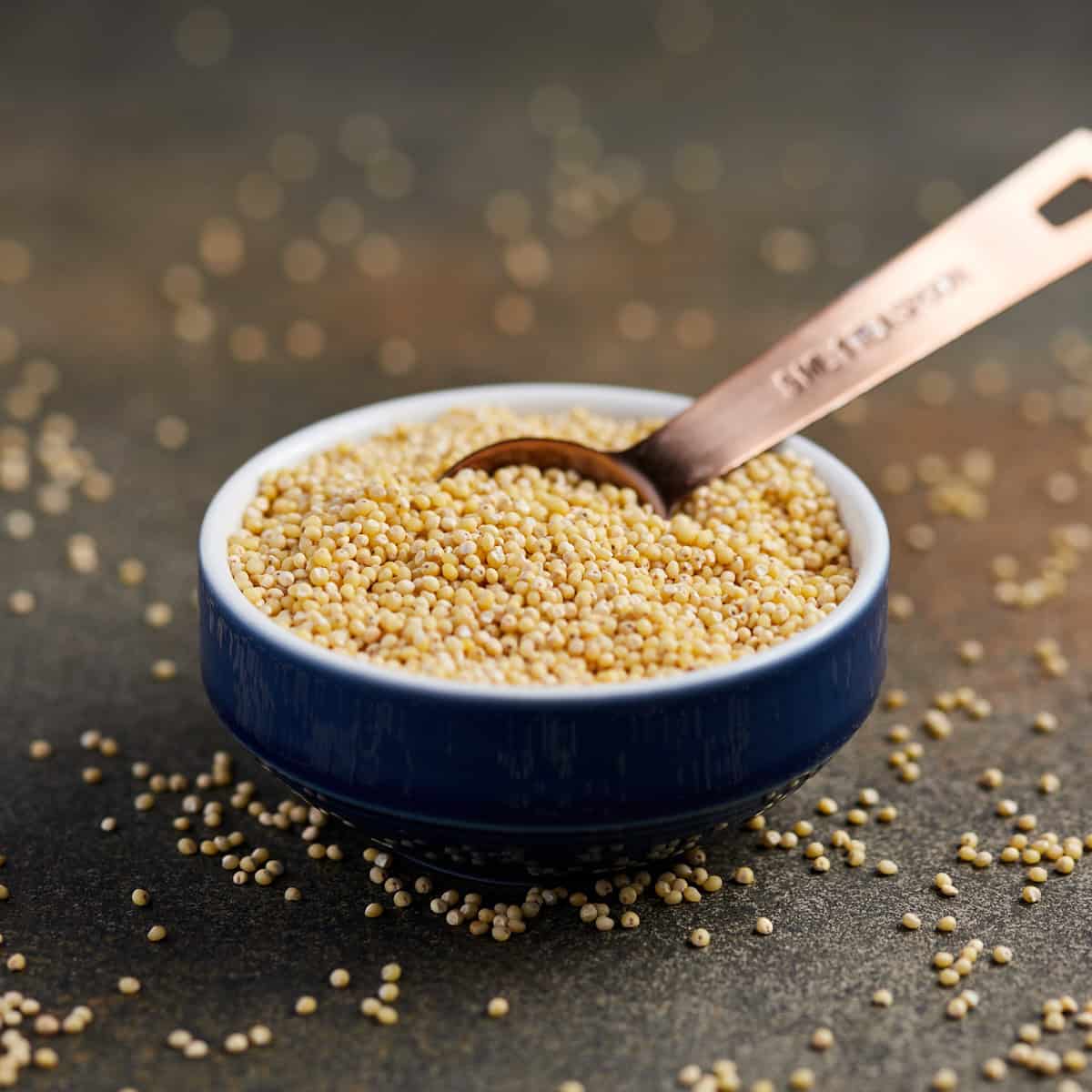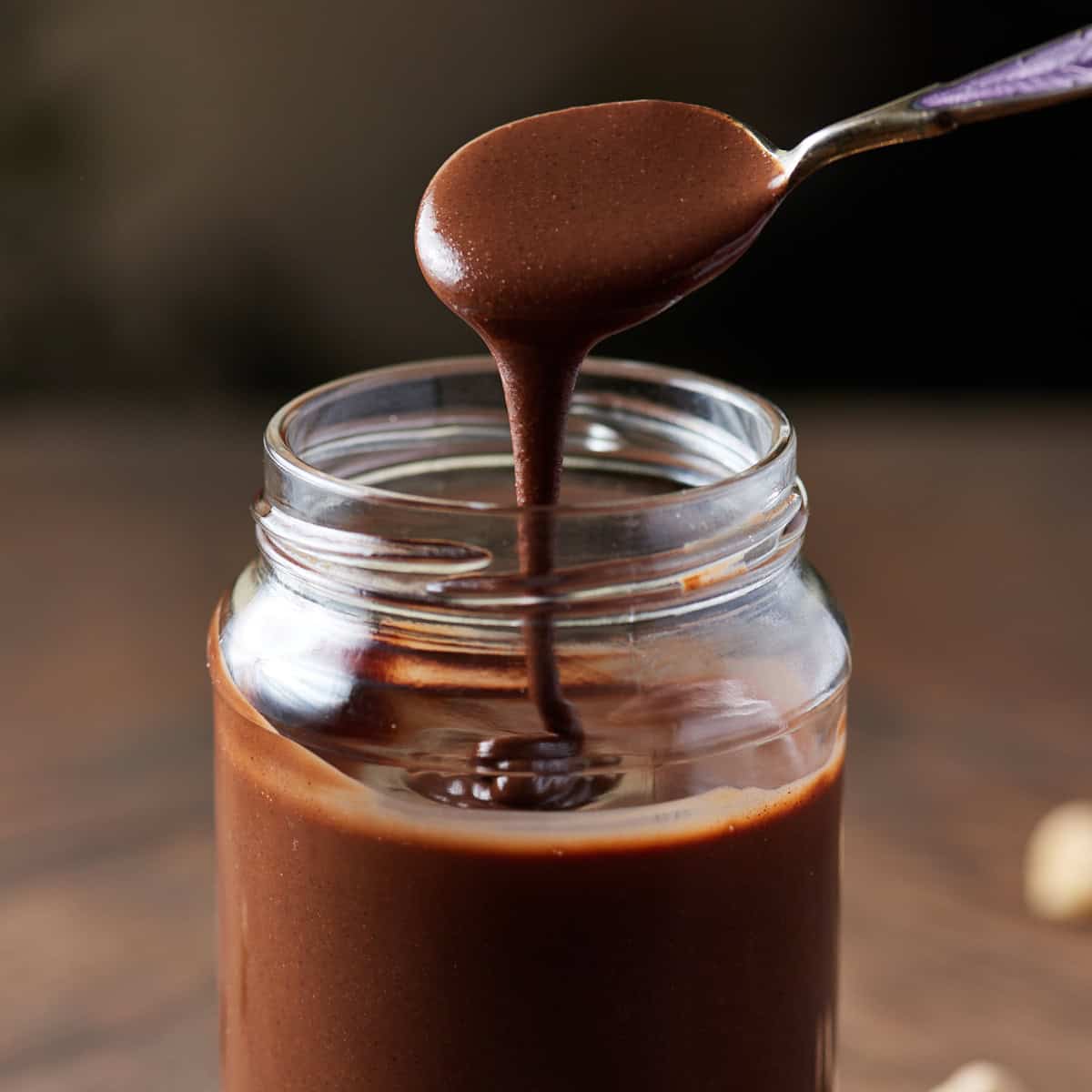How to Cook Millet Perfectly (Stovetop or Instant Pot)

Millet is such an under-utilized, under-appreciated grain that is full of nutrients and is an extremely environmentally-friendly crop. It looks a little bit like couscous and can be used in a similar way but, unlike couscous, it is naturally gluten-free! Find out everything you need to know about how and why to add this versatile and healthy little wholegrain to your diet.

What's So Good About Millet?
There are three fantastic reasons to eat millet:
- Gluten-Free - millet is naturally gluten-free so it is a great alternative to gluten-containing grains like couscous or bulghur wheat.
- Environmentally-Friendly – millet is naturally pest-resistant and drought-resistant so it requires far less water to produce than, say, rice, and can grow well in tough hot and dry conditions. It is also quick and cheap to grow compared to other grains.
- Healthy – millet is a wholegrain that it high in polyphenols, antioxidants and fibre (Healthline).
Read on to learn all about this fantastic little grain, how to cook it, and how to serve it!
What is Millet?
Millet is an ancient grain belonging to the grass family “Poaceae”, just like wheat, rice and maize (Smartfood). Little-used nowadays, these nutritious tiny grains are often thought of only as bird food. However, humans have a long history of eating millet having been cultivating it for over 7000 years!
Predominantly grown and used in Asia (particularly India) and Africa, millet is commonly used for making creamy millet porridge or ground to a flour to make flat-breads such as roti. It is also delicious used as an alternative to rice or couscous and is cooked in a similar way.
What Does Millet Taste Like?
The flavour of millet is mild and slightly sweet like corn. It can be a little bland so it benefits from good seasoning and works really well paired with bold flavours.
Health Benefits of Millet
Whole grain millet is a fantastic nutrient-rich addition to a healthy diet. It is high in protein and fibre, low in carbohydrates and high in antioxidants, especially the B vitamins. It is also high in minerals, particularly copper, magnesium and zinc (nutrition value website).
Wholegrains are highly nutritious since they are complex carbohydrates that take more effort for your body to digest and therefore provide long lasting energy. Since it does not have a rough outer husk, wholegrain millet is often more acceptable to younger children who perhaps usually prefer refined grains like white rice and white bread. Millet is also great for coeliacs or those who are gluten intolerant since it is a naturally gluten-free grain.

Should You Soak Millet Before Cooking?
As with most whole grains, millet does contain anti-nutrients (phytic acid) which can reduce your body’s absorption of its nutrients. Because of this, like rice and other grains, millet benefits from being soaked (for at least 10 minutes or overnight if possible).
Alternatively, you could try sprouting your millet to assist with even more nutrient absorption! (see the amazing Cultures for Health website for full details of how to sprout your millet).
Despite this, if you don’t have time to soak your millet, it will still be delicious and you will still be getting a good amount of nutrients from it. So don’t stress too much about this and don’t let it stop you from using millet!
Types of Millet
In many places around the world, millet is just labelled as “Millet” and we think of it as only one type of grain. But there are actually numerous different types of millet, ranging in size (from little millet which is a little smaller than couscous to the largest, sorghum, which is about the size of buckwheat or pearly barley) and texture.
The different types are categorised as sorghum, major millets and minor millets. You can see my separate post all about sorghum but the other millets are loosely categorised as follows:
Major Millets
Pearl
Foxtail
Proso
Finger (also known as Ragi)
Minor Millets
Kodo
Barnyard
Little
Guinea
Brown Top
Fonio
Adlay
Ref: Healthline (https://www.healthline.com/nutrition/what-is-millet#basics)
Pearl millet is the most widely consumed and often used in the packs marked generically as "millet" like Bob's Red Mill Millet. This is the type I used for my instructions and recipe card.
My Millet Cooking Experiment
Having noticed that there were several different types of millet at the supermarket, I decided to buy four of them to experiment - Foxtail, Barnyard, Kodo and Little Millet. I cooked all four in the same way at the same time, in different pans, so that I could see and taste the difference. The results were quite interesting!
Method:
- I soaked each type of millet for 10 minutes, then drained and rinsed it.
- Then I added each type of millet to a separate saucepan with 2 parts water and a pinch of salt (just like I would cook rice).
- I brought it to the boil and then reduced the heat and simmered gently for 10 minutes.

Results
- Little Millet and, to a lesser extent, Barnyard Millet, go to a porridge-like consistency very quickly.
- Foxtail Millet and Kodo Millet hold their shape and stay fluffy and light like a gluten-free version of couscous.

Conclusion
- Foxtail millet and kodo millet are better used as a side dish or salad (as an alternative to rice, couscous, bulghur wheat, etc.) as they have a firmer texture.
- Little millet and Barnyard millet are better used for millet porridge as they are quick cooking.
How to Cook Millet
There are two main ways of cooking millet, one for a porridge consistency, and one for a fluffy grain consistency. Cooking on the stove top is my preferred method but it's also easy to cook millet in a pressure cooker or Instant Pot. The cooking time is essentially 10 minutes either way but the Instant Pot option allows you to dump and go!
Stovetop: Mix 1 cup of millet with 3 cups (for porridge) or 2 cups (for fluffy millet grains) of water or vegetable stock (broth), bring to the boil then reduce the heat and cook over a low heat for 10 minutes, stirring occasionally
Instant Pot (Pressure Cooker): Mix 1 cup of millet with 2.5 cups (for porridge) or 1.75 cups (for fluffy millet grains) of water or vegetable stock (broth) in the inner pot and set to pressure cook at high pressure for 10 minutes (pressure valve set to sealed). After the timer beeps, leave to naturally release pressure for 10 minutes then turn the valve to release the remaining pressure. Stir.



You could also use a rice cooker in the same way as you would cook rice.
Some suggest toasting (or dry-frying) the millet grains first to bring out their nuttiness, but you can't do this if you have pre-soaked them because they are all wet. I don't find it makes a huge difference to the flavour so I skip this part.
This is a summary only. Please see the printable recipe card at the bottom of this page for full instructions. Instant Pot instructions are also included in the recipe card.
How To Use Millet
Millet is a fantastically versatile whole-grain. Use it in any of the following ways:
Porridge - use millet as an alternative to oat porridge for a nutritious breakfast (can be either sweet or savoury)
- For sweet millet porridge, cook the millet with water then add jam or stewed berries and maple syrup, or simply top with fresh fruit.
- For savoury millet porridge, cook the millet with water or vegetable stock (broth) and add some chilli oil or sesame oil, chopped spring onions, crispy garlic or vegan bacon pieces, coriander and tamari (like congee in Singapore).
Salads – use millet as a grain base for any salad. Just add veggies and a delicious dressing! Try this spiced millet salad with pistachios and apricots or substitute the quinoa for millet in this herby quinoa salad.
Grain side dish – use as an alternative to rice or couscous to go with curries, stews or as a thickener thrown into soups. Cook in vegetable stock (broth) and drizzle with a generous glug of extra virgin olive oil (or vegan butter) after cooking. Season well and garnish with fresh herbs.
Grain bowls - millet is wonderful as part of a grain bowl. Cook the fluffy millet recipe, serve with roasted vegetables, salad leaves, maybe some crispy air fried tofu with chia seeds, and a dollop of hummus or muhummara, for a nutritious and delicious lunch!
Millet pilaf - substitute millet for the rice in your favourite pilaf recipe. For a quick go to Instant Pot pilaf, sauté chopped onion and garlic, finely diced carrot and 1 teaspoon curry powder or garam masala, add 1 cup millet and 1 ½ cups vegetable stock. Mix well and put the lid on. Set to 10 minutes high pressure (or to RICE setting), then leave for a 10 minute natural pressure release before doing a quick release for the remaining pressure. Stir with a rice paddle and serve with some toasted almond flakes or cashews sprinkled on top.

Ground into flour – use millet flour as part of a gluten free flour blend to make breads or pancakes.
Storage
Cooked millet will keep in an airtight container in the fridge for up to 4 or 5 days. Use cold or leave it out for half an hour to come to room temperature to use in salads or added to soups. Alternatively you could re-heat millet in the microwave.

FAQs
Sorghum is often called a millet and comes from the same grass sub-family Panicoideae but is a different genus and species to millet. You could therefore think of it as a sister grain to the other types of millet.
Use less water to cook it in and don’t leave it soaking for longer than the recipe suggests. Please see my recipe showing how to cook millet as porridge and how to cook millet as fluffy grains.
📖 Recipe 📖

How to Cook Millet Perfectly (Stovetop or Instant Pot)
Ingredients
Millet Porridge
- 1 cup millet
- 3 cups water or vegetable stock (broth) (Stovetop)
- 2.5 cups water or vegetable stock (broth) (Instant Pot)
Millet Grains
- 1 cup millet
- 2 cups water or vegetable stock (broth) (Stovetop)
- 1.75 cups water or vegetable stock (broth) (Instant Pot)
Instructions
Soaking (optional)
- Soak the millet for 10 minutes (or up to 12 hours) in a jug of water. Then, drain and rinse the millet.
Millet Porridge
- Stovetop:Mix the millet and water or broth in a small pan. Bring to the boil then quickly turn the heat down to low and put the lid on (but slightly askew) and leave to simmer gently for 10 minutes. Stir frequently.1 cup millet, 3 cups water or vegetable stock (broth)
- Instant PotMix the millet and water or broth in the inner pot. Put the lid on, turn the pressure valve to sealed, and set to pressure cook at high pressure for 10 minutes.Once cooked, leave for 10 minutes natural pressure release, then turn the valve to open and quick release the rest of the pressure. Stir then serve.2.5 cups water or vegetable stock (broth), 1 cup millet
Millet Grains
- Stovetop:Mix the millet and water or broth in a small pan. Bring to the boil then quickly turn the heat down to low and put the lid on (but slightly askew) and leave to simmer gently for 10 minutes. Stir once cooking is complete.1 cup millet, 2 cups water or vegetable stock (broth)
- Instant PotMix the millet and water or broth in the inner pot. Put the lid on, turn the pressure valve to sealed, and set to pressure cook at high pressure for 10 minutes.Once cooked, leave for 10 minutes natural pressure release, then turn the valve to open and quick release the rest of the pressure. Stir then serve.1 cup millet, 1.75 cups water or vegetable stock (broth)
Notes
- Soaking the millet grains first is optional to make the nutrients more available.
- Toast/dry-fry the millet grains first if you want to bring out their nuttiness (but they need to be dry to do this).
- Cooked millet will keep for 4-5 days in an airtight container in the fridge, or for 2 months in the freezer. Use cold or at room temperature, or re-heat in the microwave.
- For sweet porridge: serve with jam, stewed fruits or chopped fresh fruits and maple syrup.
- For savoury porridge: cook with broth instead of water and serve with chilli or sesame oil, chopped spring onions, coriander and tamari and maybe some chopped vegan bacon or tofu pieces!
- Use fluffy cooked millet grains in salads, grain bowls, soups and stews or serve as a side dish in place of rice or couscous.
Nutrition
Did you make this recipe? Please leave a ⭐ star rating ⭐ on the recipe card!
Related Recipes
If you like this recipe, you may like these other delicious vegan and gluten-free recipes too:
🌿
Follow me on Instagram - Facebook - Pinterest or subscribe to my emails!
🌿
The post How to Cook Millet Perfectly (Stovetop or Instant Pot) appeared first on Cooking With Camilla.
What's Your Reaction?
 Like
0
Like
0
 Dislike
0
Dislike
0
 Love
0
Love
0
 Funny
0
Funny
0
 Angry
0
Angry
0
 Sad
0
Sad
0
 Wow
0
Wow
0









































